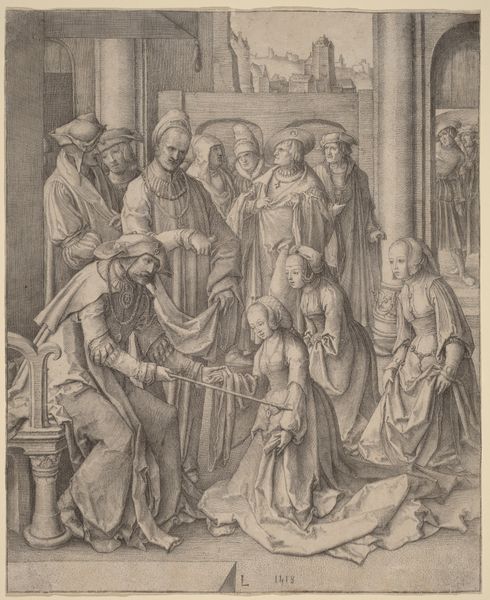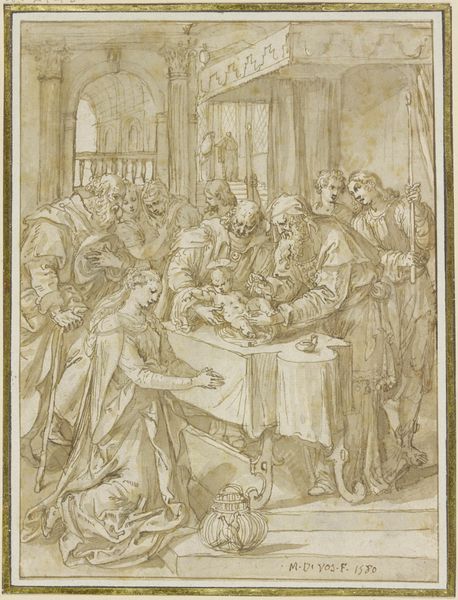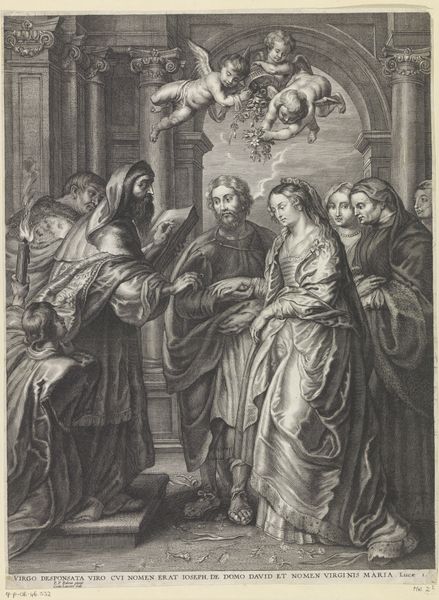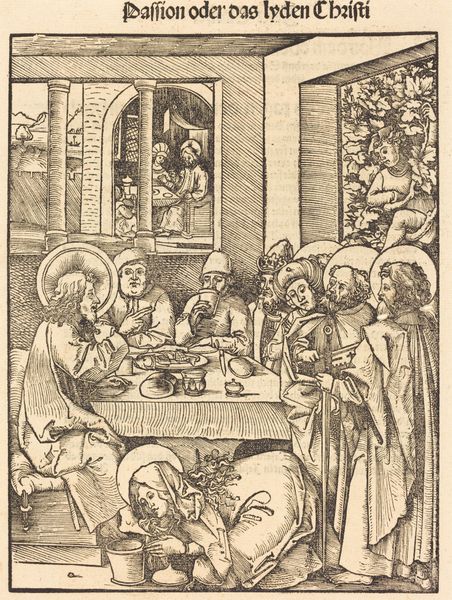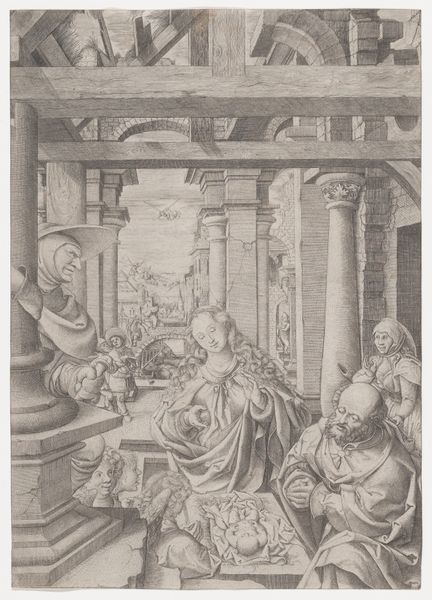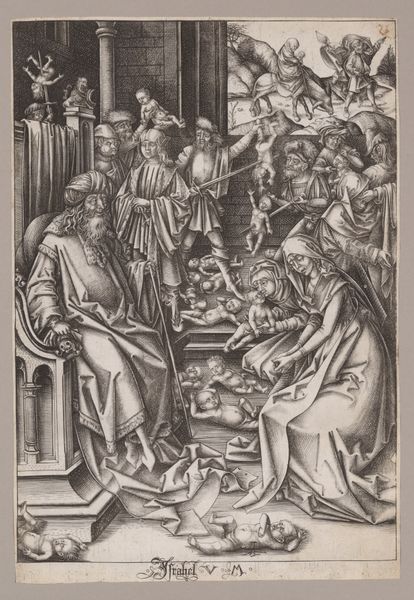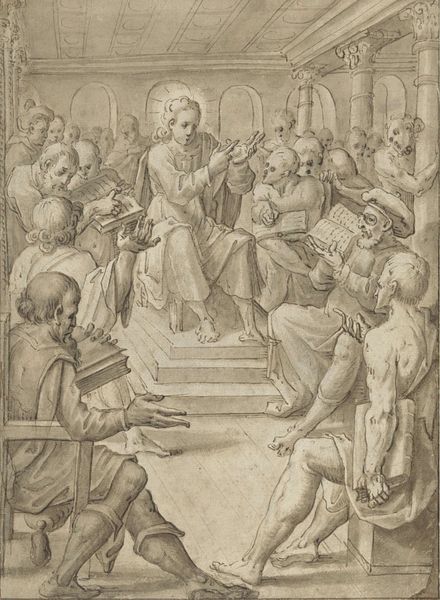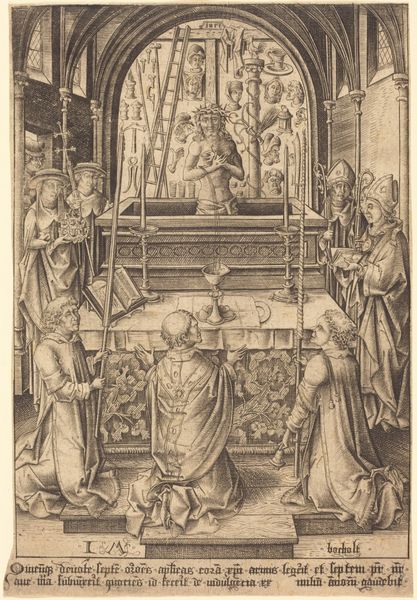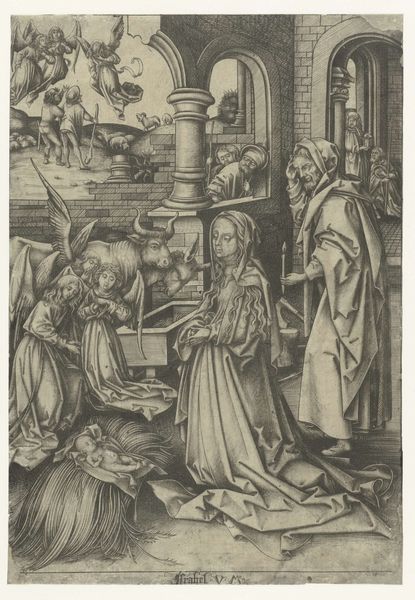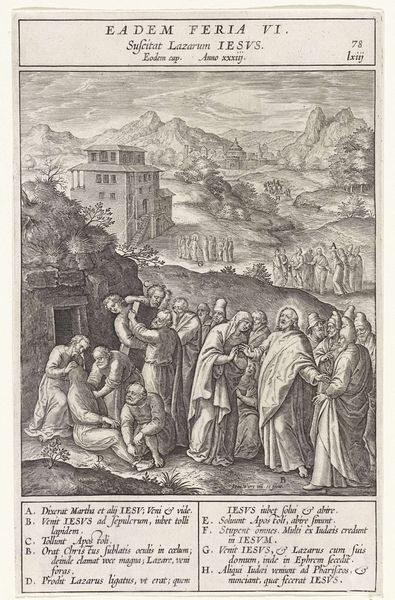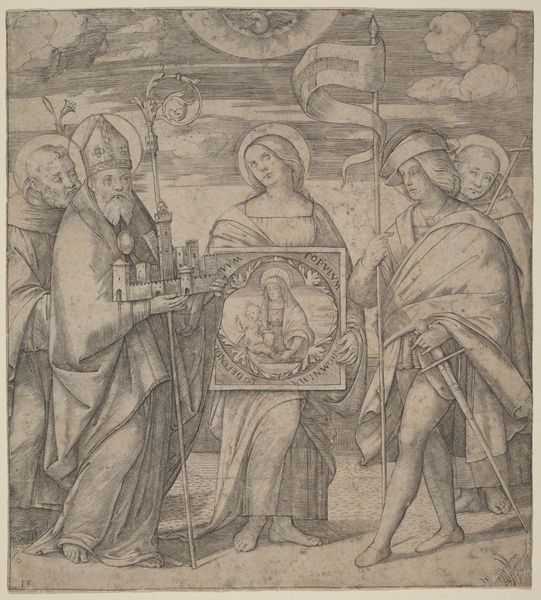
painting, oil-paint
#
narrative-art
#
painting
#
oil-paint
#
figuration
#
oil painting
#
history-painting
#
academic-art
#
italian-renaissance
#
virgin-mary
Dimensions: 27 1/8 x 21 1/2 in. (68.9 x 54.6 cm)
Copyright: Public Domain
Editor: Here we have an oil painting entitled "The Adoration of the Magi," dating back to sometime between 1515 and 1525, and currently held at the Metropolitan Museum of Art. I am struck by how this familiar biblical scene is staged within a decaying architectural setting; what are your thoughts on this painting? Curator: The dilapidated structure is fascinating, isn't it? Think about what that says about the state of the world into which Christ is born. Palatial but in decay, the backdrop symbolizes the transition from the old order to the new. Consider, too, the ethnicity of the Magi, in particular the Black king: how might this detail function in early 16th-century Europe, given its evolving social and political landscape? Editor: So, you’re suggesting the artist used the setting to symbolize a transition of power or societal norms and, by painting one of the Magi as Black, comments on this time in history? Curator: Precisely. This depiction is likely tied to the rise of mercantile cities and exploration; an increasingly globalized world presented opportunities, but also generated societal anxiety that would influence even religious painting. It encourages the viewer to contemplate not just a holy scene, but the forces shaping the world around them. Editor: That’s so interesting. It never occurred to me that the setting might also function as a comment on this new socio-political order. Thank you! Curator: It’s these nuances that make studying the history *around* the art just as enriching as analyzing the art itself.
Comments
No comments
Be the first to comment and join the conversation on the ultimate creative platform.


